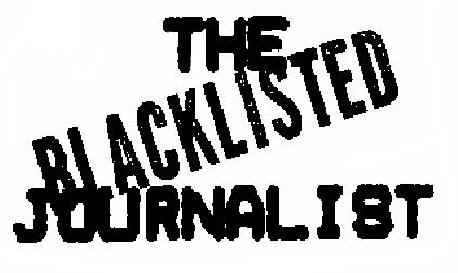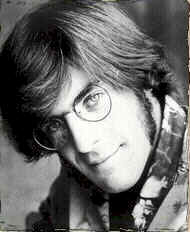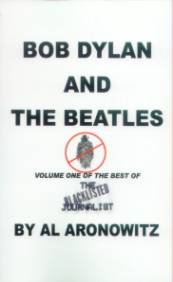
 sm
smCOLUMN 110, OCTOBER 1, 2004
(Copyright © 2004 The Blacklisted Journalist)
SECTION TWELVE
EMAIL PAGE THREE

 sm
sm
COLUMN
110,
OCTOBER 1, 2004
(Copyright © 2004 The Blacklisted Journalist)

JOHN SEBASTIAN
`"Woodstock,'' he says, `"is still a groovy place.''
WHERE CAN YOU STILL HEAR MUSIC IN WOODSTOCK?
Subject:
Date: Fri, 13 Aug 2004 16:01:00 -0500
From: "Borsellino, Rob" rborsell@desmoine.gannett.com
To: info@blacklistedjournalist.com
By GREG HAYMES
" 2004 Albany Times Union
WOODSTOCK, N.Y. ... For more than four decades, Woodstock built its reputation on music. But
these days, there's almost nowhere left in town where an audience can hear it.
Over on Tinker Street, Bob Dylan once spent so much time at Cafe
Espresso that the club's owners gave him his own room on the second floor.
Later, it held its own for years as the Tinker Street Cafe, where the walls were covered
with 8-by-10-inch glossy promo photos of the distinguished folk, blues, jazz and rock
musicians who had played there.
Today, the building houses the Center for Photography at Woodstock.
On Rock City Road ... past the tourists perusing the souvenir tie-dyes at the Not Fade Away
T-shirt shop ... the Brass Rail was the town's working-man's bar back in the '70s, a place to
run into singer-songwriter Tim Hardin or catch the Lovin' Spoonful's Steve Boone sitting in
with a local band. Now it's a framing store.
And saddest of all, the Joyous Lake, a classy, intimate little club on Mill Hill Road just north of the always bustling Village
Green, is shuttered.
The Lake used to be Woodstock's hottest music spot, where blues harmonica master Paul
Butterfield might be sitting at the bar, or where the members of Phish could be found onstage
working the kinks out of fresh new material they were recording down the road at Bearsville
Studios.
``I drove past it yesterday, and I thought, `What a shame,''' says folk and jazz guitarist
Artie Traum, who has lived in Woodstock since 1969.
``There are weeds growing up all around it. It's very odd to me that a room like that,
right in the center of this vibrant tourist town, has been sitting empty as long as it has.''
There are still a few places around town to hear music, like the Colony Cafe on Rock City Road and New World Home Cooking on Route
212 on the way into town. And there are occasional concerts at the Bearsville Theatre, the
summertime-only Woodstock Playhouse and the Kleinert/James Arts Center.
``But there's not really a professional showcase nightclub in town,'' says record producer
Aaron Hurwitz. Like many people in town, he has a second job, as leader of the rock band Prof.
Louie and the Crowmatix.
Thirty-five years ago this weekend, the tiny town of Woodstock was such a mecca for
musicians that it lent its name to the most legendary festival in rock 'n' roll history ...
despite the fact that the 1969 Woodstock Music and Art Fair actually tookplace on a dairy
farm in the town of Bethel, N.Y., almost 70 miles southwest of Woodstock.
But while Bethel was certainly the place to be on that fabled weekend, the town of
Woodstock was the epicenter of a musical revolution. Bob Dylan lived in Woodstock, and Van
Morrison had a house there. For several months, so did Jimi Hendrix.
Woodstock is where members of Dylan's acclaimed backing band rechristened themselves the
Band, and titled their 1968 debut album ``Music From Big Pink'' in honor of the house they
shared in nearby West Saugerties, N.Y.
Others, including Janis Joplin, Eric Clapton, the Rolling Stones and members of the
Beatles, rolled into town to visit, and sometimes to jam or even record.
The main catalyst for Woodstock's transformation into a musical capital in the '60s was
Albert Grossman, who managed Dylan and Joplin as well as the Band, Paul Butterfield, Happy and
Artie Traum and others.
Grossman, in turn, had been introduced to Woodstock by Peter Yarrow of Peter, Paul & Mary,
another Grossman act: Yarrow's family had long had a cabin on a back-mountain road. Grossman
started buying property in the area, and in the spring of 1964 moved to town full time.
By the fall of '64, Dylan was a regular fixture on the burgeoning scene; in '66, the singer
bought his own home in town.
Before his death in 1986, Grossman established a musical empire in Woodstock, building
Bearsville Studios, a couple of restaurants (the Bear and the Little Bear) and the Bearsville
Theatre, and launching the Bearsville Records label.
As a gathering place for musicians, Woodstock seems an unlikely candidate, compared with
music industry centers like New York City and Los Angeles.But that's the appeal: Woodstock is
a place where musicians came for refuge ... a place to relax, to kick back after a long,
exhausting tour.
A place to recharge creative energies. A place of inspiration. Woodstock was also a relatively inexpensive place to live,
especially compared to the other music centers. ``A lot of us joke that Woodstock is a place
where you can live like a rock star on a folk singer's salary,'' Traum says. ``But it's
true. When I bought my house 20 years ago, it was in the $80,000 range. It's not a huge house, but
it's really comfortable, and I
live really nicely on a folksinger's wages. If I was in L.A., I'd be living in a hovel with
what I make ... or actually maybe only half a hovel.''
Woodstock is close to New York City ... just a two-hour drive up I-87 ... but it's rural, an
especially attractive selling point for those who came of age during the back-to-the-land
movement of the late '60s and early '70s.
``I think that because I grew up in the Bronx, I always wanted to live in the country,''
says Traum.
Another city kid, John Sebastian, launched his solo career with an impromptu star turn at
the '69 Woodstock festival; he moved to the town of Woodstock in 1975.
``So many of my contemporaries were looking for a place in the country and ended up here,''
he says.
Graham Parker's acerbic songwriting style makes him seem like an unlikely poster boy for
Woodstock; even so, he's the only musician pictured in the latest brochure from the Woodstock
Chamber of Commerce.
``I used to have a place in New York City, but I'd come up here for weekends with my
wife,'' Parker says. ``We thought it would be a pretty amazing place to get a home. It was the
beauty of the area that I liked.
``Quite frankly, I didn't even realize that Woodstock had this reputation as an artists'
community. That would have filled me with dread. I just wanted to live in a place where nobody
could see me from the road a place with lots of trees and snakes and deer and things.''
Artie Traum, however, had perhaps the coolest reason for coming to Woodstock. His brother
and musical partner Happy already was living in town along with Grossman, their manager. But
didn't make the move to town until he got a phone call.
``Dylan called me up one day and wanted to know if I would watch his house ... a 37-room
house up on the mountain,'' Traum recalls. ``He had moved to another house ... from Mead
Mountain to Ohayo Mountain ... and his old house was empty. So I moved up here to Woodstock just
to house-sit rent-free for Bob Dylan. It was pretty amazing.''
These days, it sometimes seems as though half of the town's population of just more than
6,000 makes its living in one corner of the music industry or another.
Jazz musicians such as Marilyn Crispell, Jack DeJohnette, Don Byron, Pat
Metheny, Francesca Tanksley, Dave Holland, Steve Swallow and Carla Bley make their homes there.
From the folk end of the musical spectrum, John Herald, Happy and Artie Traum, John Sebastian,
Natalie Merchant, Ed Sanders (of the Fugs) and Tom Pacheco call Woodstock home.
So too do rockers Kate Pierson and Keith Strickland of the B-52's, Graham Parker, the
Band's Levon Helm, bassist Tony Levin (of Peter Gabriel's band), bassist Gail Anne Dorsey (of
David Bowie's band) and blues guitarist and latter-day Band member Jim Weider.
A lot of musicians in the Woodstock area have built their own studios, either in their
homes or nearby: Electronic musician Kevin Bartlett has Aural Gratification Studios; Tony
Levin has his Applehead Studios. Jazz guitar great Pat Metheny recorded such aptly titled
albums as ``Letter from Home'' and ``We Live Here'' at his
home studio in Willow, just down the road from Woodstock.
``If you're a musician, you know that you can move to some neighborhoods where people look
at you really strange,'' says Hurwitz. ``But there's no kind of problem like that here. `Oh,
you're a musician,' they'll say. `That's great. What do you play? Want to get together?' So
it's easy to live here, and there's a really creative energy in the place.''
John Sebastian puts it another way.
``Woodstock,'' he says, ``is still a groovy place.'' ##
FOR AS LONG AS PEOPLE KEEP LISTENING TO BOB DYLAN AND THE BEATLES, PEOPLE WILL WANT THIS BOOK

"A masterpiece!" --- SALLY GROSSMAN, widow of Bob Dylan's brilliant original manager, Albert Grossman.
"This book is a must-read for all rock 'n roll aficionados!"---EAR CANDY
"An essential reference for demystifying what the author refers to as: 'one of the most self-destructive binges of creativity in cultural history.'"---HAMMOND GUTHRIE, COUNTERPUNCH MAGAZINE
"Required Reading for anyone and everyone who considers themselves fans, followers, students, or those just plain curious of the Golden Age of Popular Music"---GARY PIG GOLD, FUFKIN.COM.
"I love the book. I love the way you can open it to any page and start reading and it keeps you reading. The book is just fun to read." --LEVON HELM, Drummer of THE BAND from Big Pink.
"Ellis Paul and I love your book."---RALPH JACCODINE, Ralph Jaccodine Management.
". . .perfect for our times."---WOODSTOCK TIMES
"Adam
Duritz (he's the lead singer and writer for the famed
". . .a must read for anyone who loves, music, loves life, loves rock and roll."---TSAURAH LITZKY, author of The Motion of the Ocean, Baby on the Water, and Goodbye Beautiful Mother.
"I recommend it."---DOUGLAS HOLDER, IBBETSON STREET PRESS.
".
. .It is a fasinating, insightful read. You are such a wonderful
writer."---STEPHANIE LEDGIN, Music
Journalist.
"I could not put this book of yours down for a minute."---ED GALING, POET LAUREATE OF HATBORO, PA.
"Quite simply, Al Aronowitz is a living legend"---JOHN FORTUNATO, THE AQUARIAN.
"Every student and fan of The Beat Generation, Bob Dylan, The Beatles and The Rolling Stones will want to read this book"---RON WHITEHEAD, POET
"Volume One Of The Blacklisted Journalist is the kinda tome what a fella can dip into at any given point and find oneself hooked within a couple paragraphs"---DUKE DE MONDO, BLOGCRITICS.ORG.
"BOB
DYLAN AND THE BEATLES: Volume One Of The Best Of The Blacklisted Journalist is a
golden stash box of Al's You-Are-There history of two thirds of rock's Holy
Troika"---MICHAEL SIMMONS, LA WEEKLY.
IN
THIS 615-PAGE
PAPERBACK, AL ARONOWITZ, ACCLAIMED AS THE "GODFATHER OF ROCK
JOURNALISM," TELLS YOU MORE ABOUT BOB DYLAN AND THE BEATLES THAN ANY OTHER
WRITER CAN TELL YOU BECAUSE
NO OTHER WRITER WAS THERE AT THE TIME. AS THE MAN WHO INTRODUCED ALLEN GINSBERG
TO BOB DYLAN, BOB DYLAN TO THE BEATLES AND THE BEATLES TO MARIJUANA, ARONOWITZ
BOASTS, "THE '60S WOULDN'T HAVE BEEN THE SAME WITHOUT ME."
CLICK HERE TO GET TO INDEX OF COLUMN 110

CLICK HERE TO GET TO INDEX
OF COLUMNS
The
Blacklisted Journalist can be contacted at P.O.Box 964, Elizabeth, NJ 07208-0964
The Blacklisted Journalist's E-Mail Address:
info@blacklistedjournalist.com
![]()
THE BLACKLISTED JOURNALIST IS A SERVICE MARK OF AL ARONOWITZ